Prayer flags fluttering in the wind are the lasting image of Nepal.
The sutras that are inscribed upon them transcend Buddhism, Hinduism or Jainism. They speak of compassion, wisdom and love. Nepalis of all creeds ultimately follow the same path, that of Bhakti Yoga, the way of devotion.
Religion is the foundation of Nepali life. Concepts of Buddhism and Hinduism mix with elements of Animism and Shamanism creating a rich and colorful blend of faiths.
Buddhists and Hindus can be seen praying at the same temples. And here, unlike in neighboring India, Hindu and Muslim communities coexist peacefully.
The life of a Nepali Hindu is guided by ritual.
In the polytheistic temples pilgrims make religious offerings, pray for blessings or simply come to show devotion.
There are many gods, countless attributes of the divine.
There are the old elemental gods such a Surya the sun, Agni fire or Indra the god of rain. And Garuda, the legendary bird-like creature found in Hindu, Jain and Buddhist mythology.
Then there are the omnipresent ones such as Shiva, Vishnu and Brahma.
And in between there are the consorts Parvati and Saraswati and their multiple manifestations…
…the Taras, Hanuman, Kumara and Ganesh and many many more.
Each has their devotees who bring daily offerings of flower petals, rice and sweets.
This is the ritual of Puja performed usually in the morning so as to assure an auspicious day.
Here like in India Sadhus, Hindu ascetics who have renounced worldly life and embarked on a personal search, offer Tika a symbol of blessing placed at the third eye chakra center acknowledging divine presence.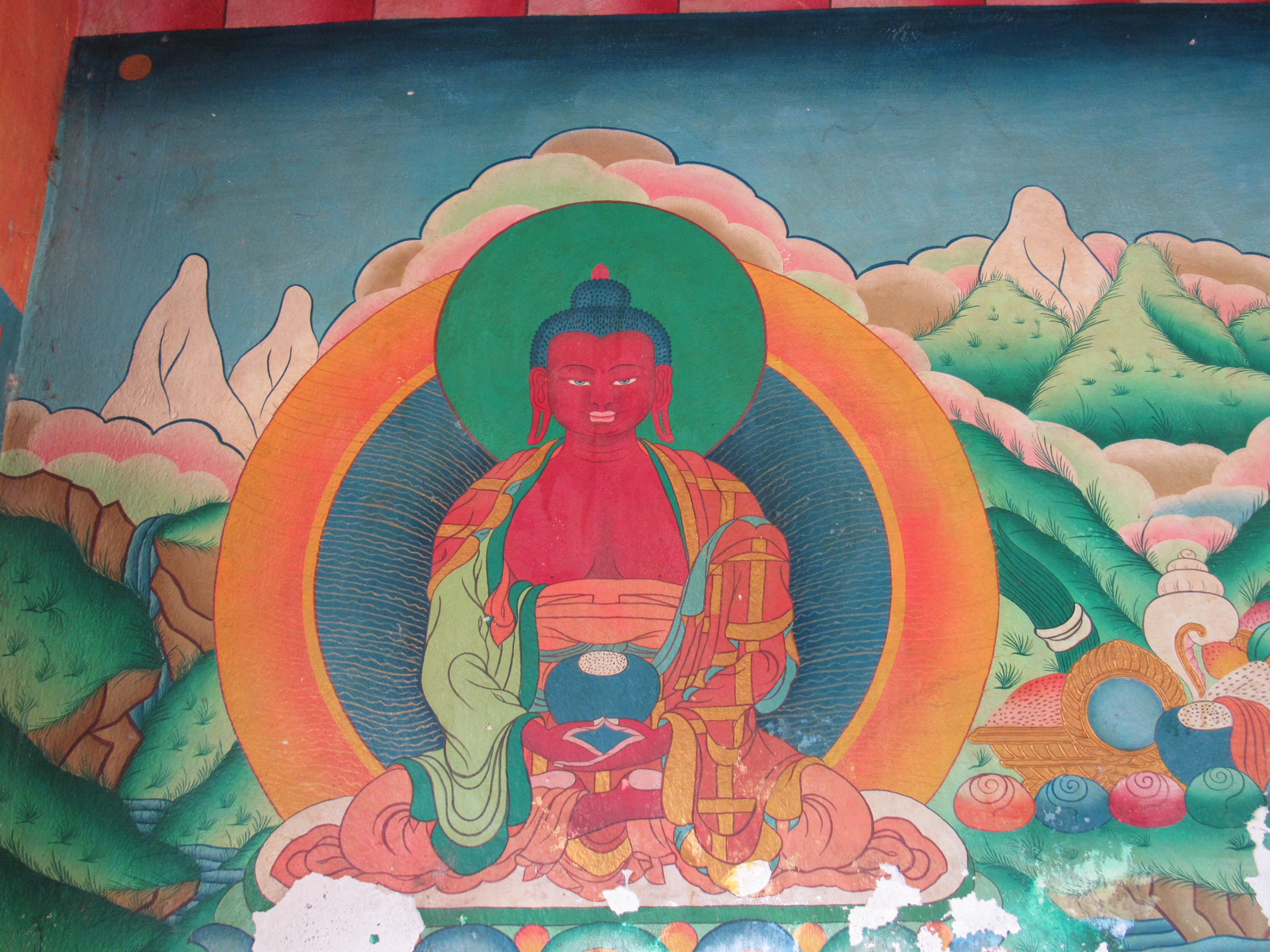
Buddhism is practiced mainly by the people of the high Himalayas. A philosophy rather than a religion it is based on following an eight fold path that leads to nirvana or enlightenment. As in Hinduism life is a cycle of birth and rebirth and karma.
While Buddha who incidentally was born in Nepal did not want to be idolized, under the influence of Hinduism about 1000 years after his death different types of images began to adorn the Buddhist temples or gompas.
Tibetan Buddhism has four major schools as well as the ancient Bon pre- Buddhist animist beliefs.
Over 10% of Tibetans in exile live in Nepal.
They are devout Buddhists and their presence in Kathmandu can be felt around the giant stupa Bodhnath…
and Swyambhunath the monkey temple.
Here they can be seen spinning prayer wheels and circumambulating the massive stupas under the watchful eyes of the Buddha.
Prayer wheels are spinned as an act of devotion.
Mani stone walls inscribed with Tibetan mantras…
adorn the entrances to the mountain villages.
And prayer flags rooted in pre-Buddhist beliefs have become the most recognized symbol of Nepali Buddhism.
Shamanism, with its ancient healing traditions is practiced by many mountain people. Ceremonies call upon dieties and offer them sacrifices as acts of dedication and acknowledgement that there is a higher realm of spirit, of cause and effect.
All Nepalis have a devotional attitude towards the landscape and in this inspiring scenery it is easy to understand why. Many mountains, rivers and lakes are sacred. Macchapucchare, the unclimbed peak, is a reminder that here Nature is god.
As I stand in awe of its marvelous creations I cannot help but feel a deep sense of Oneness surrounding and permeating my whole being. And with a final bow I depart this beautiful country.
Until we meet again…
Namaste
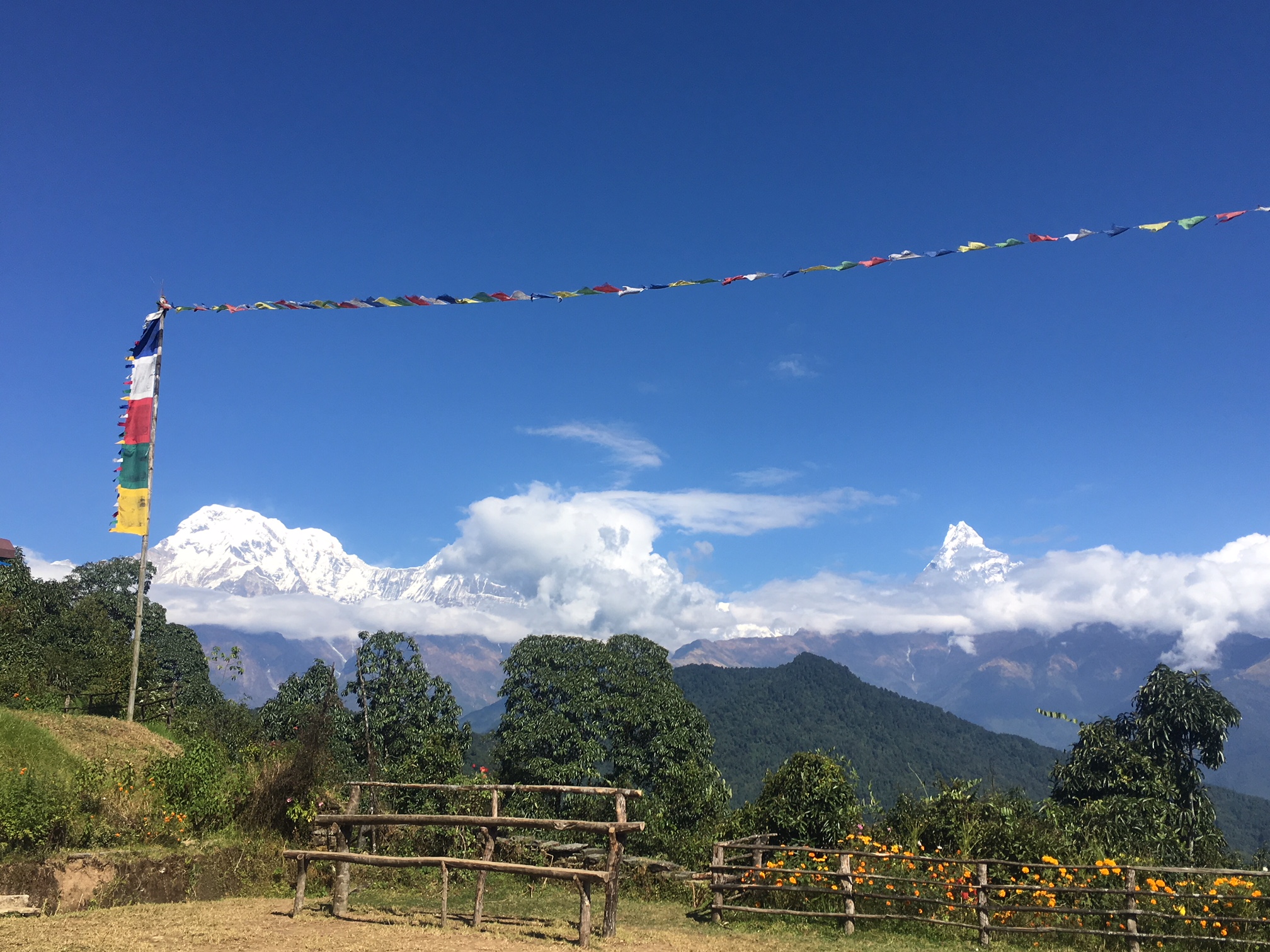

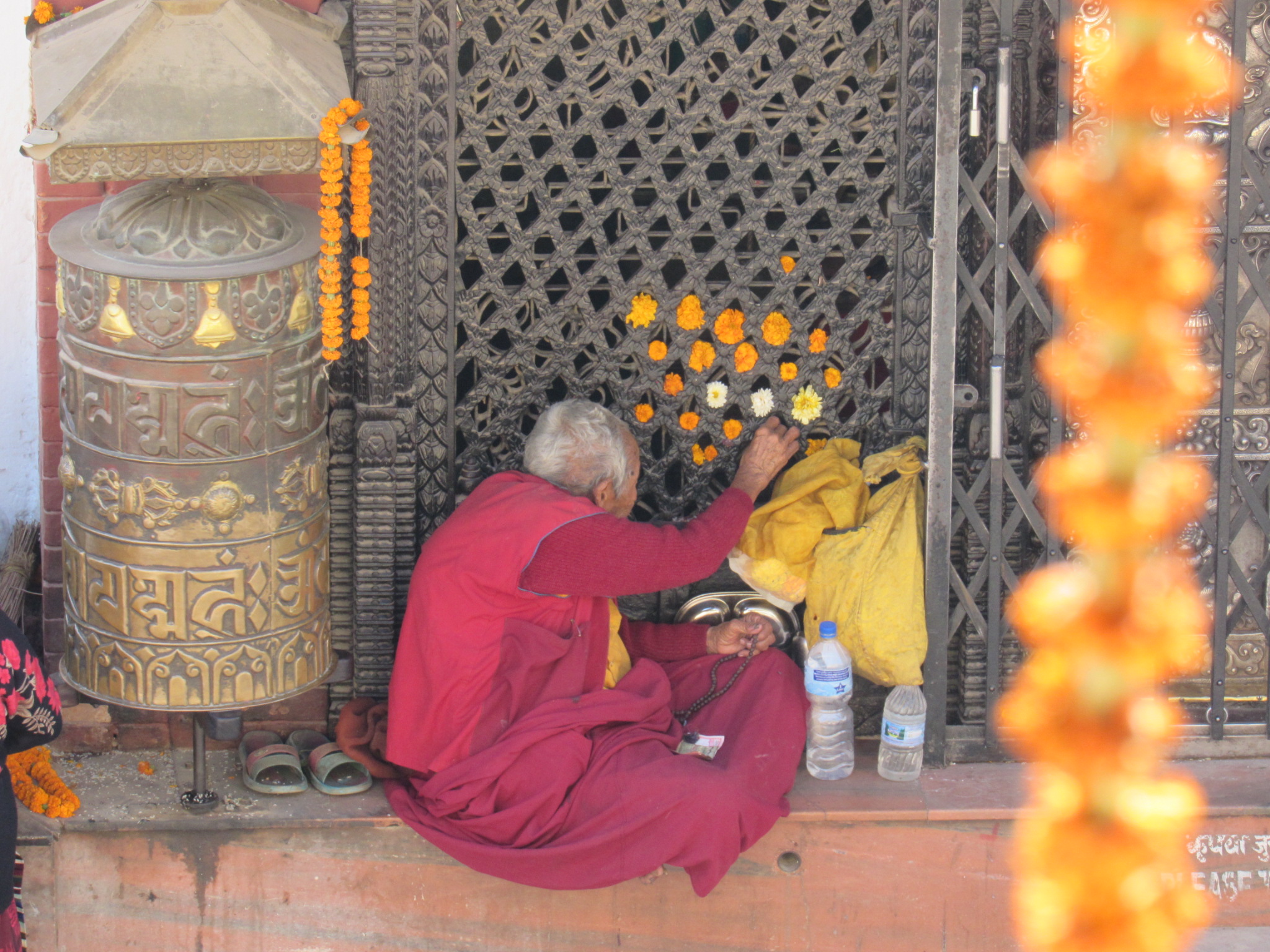
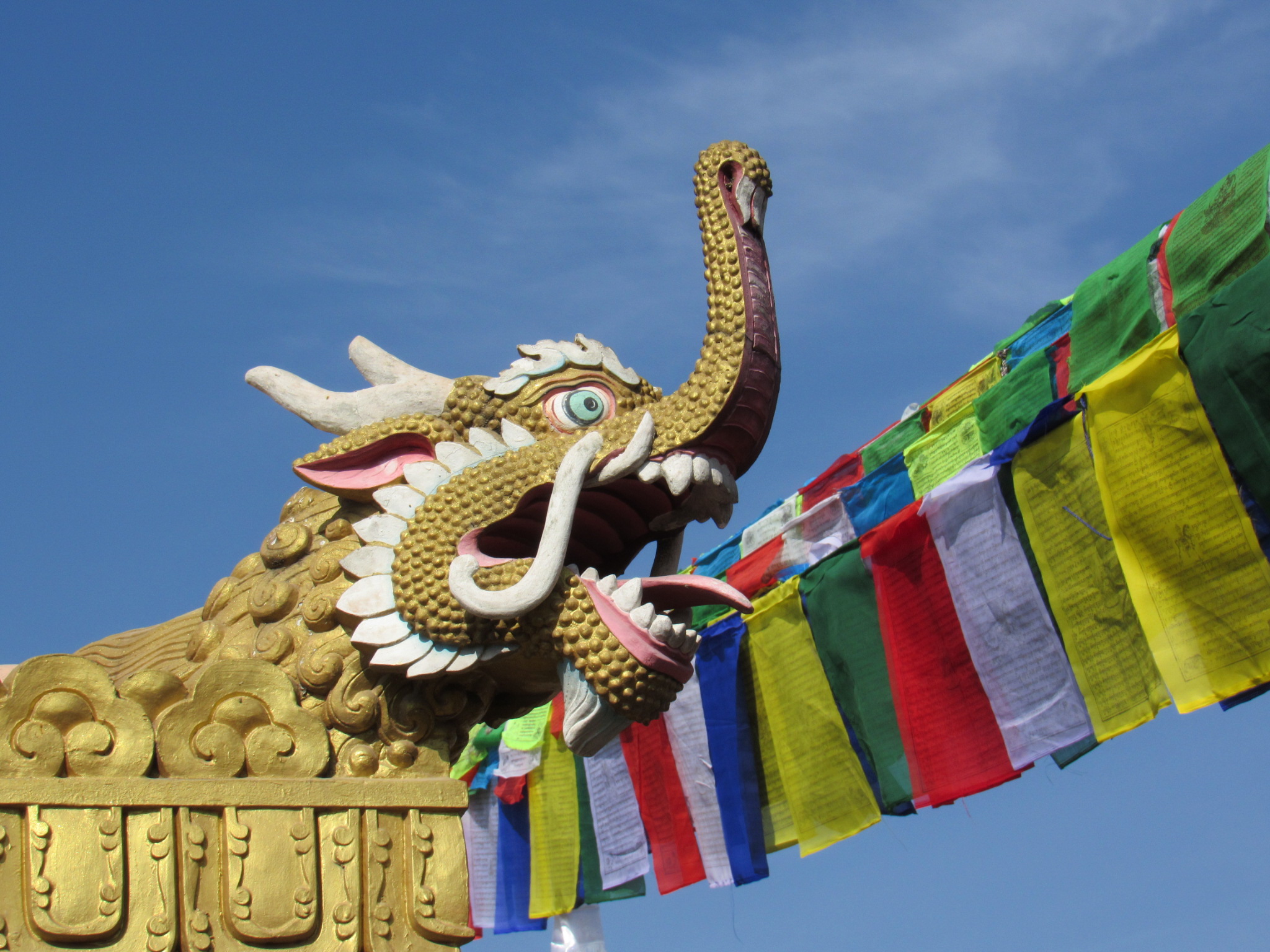



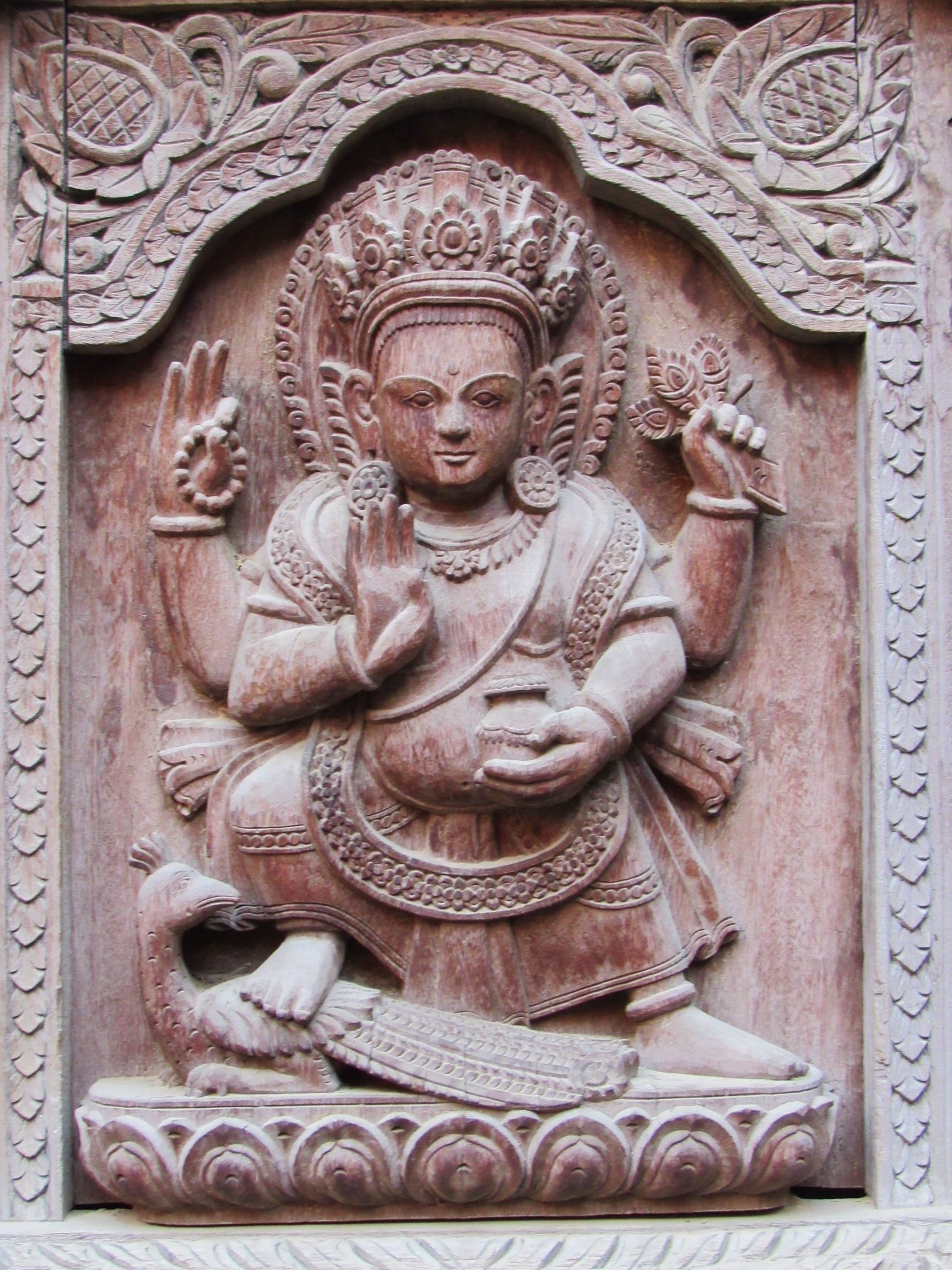
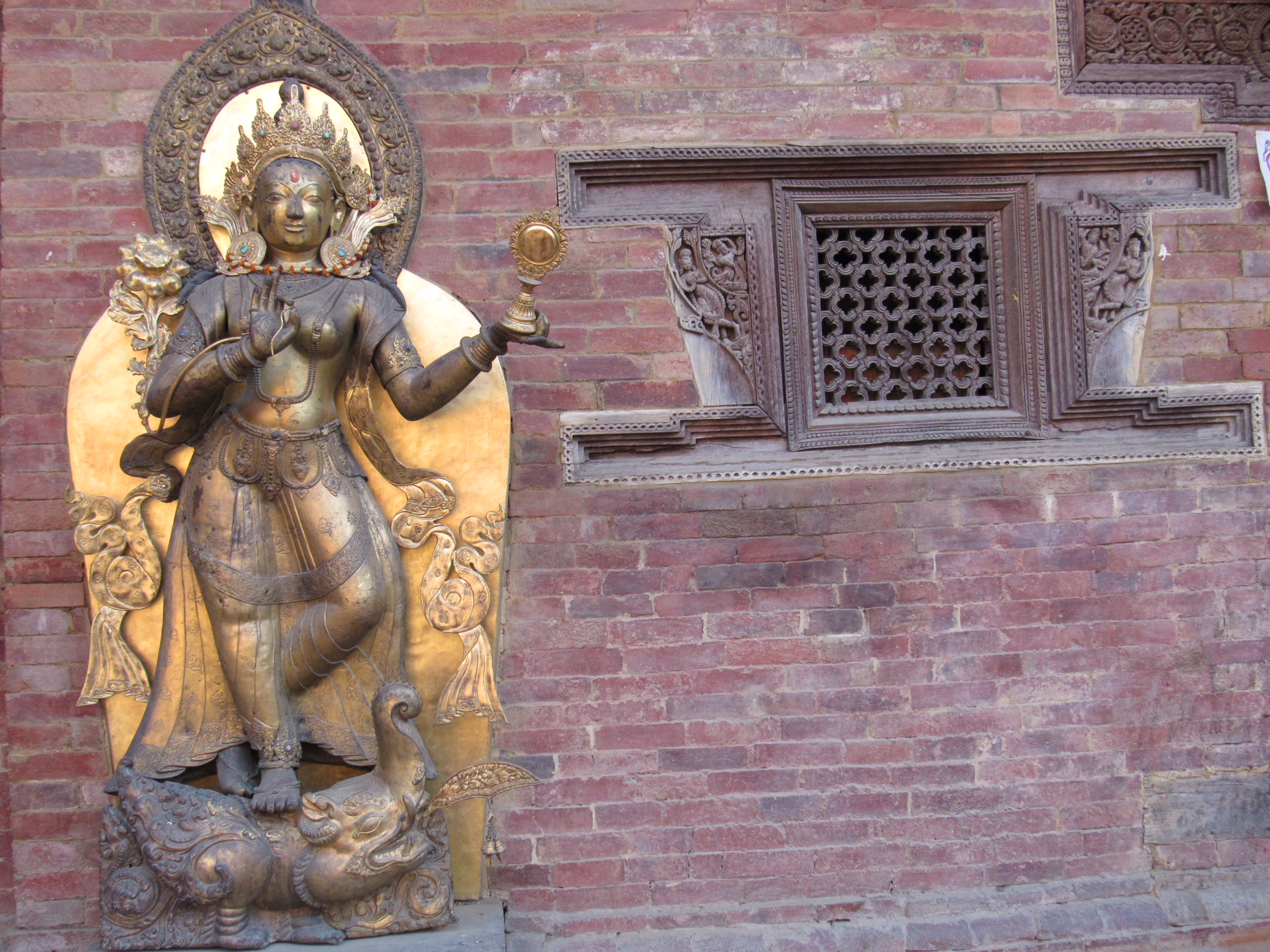
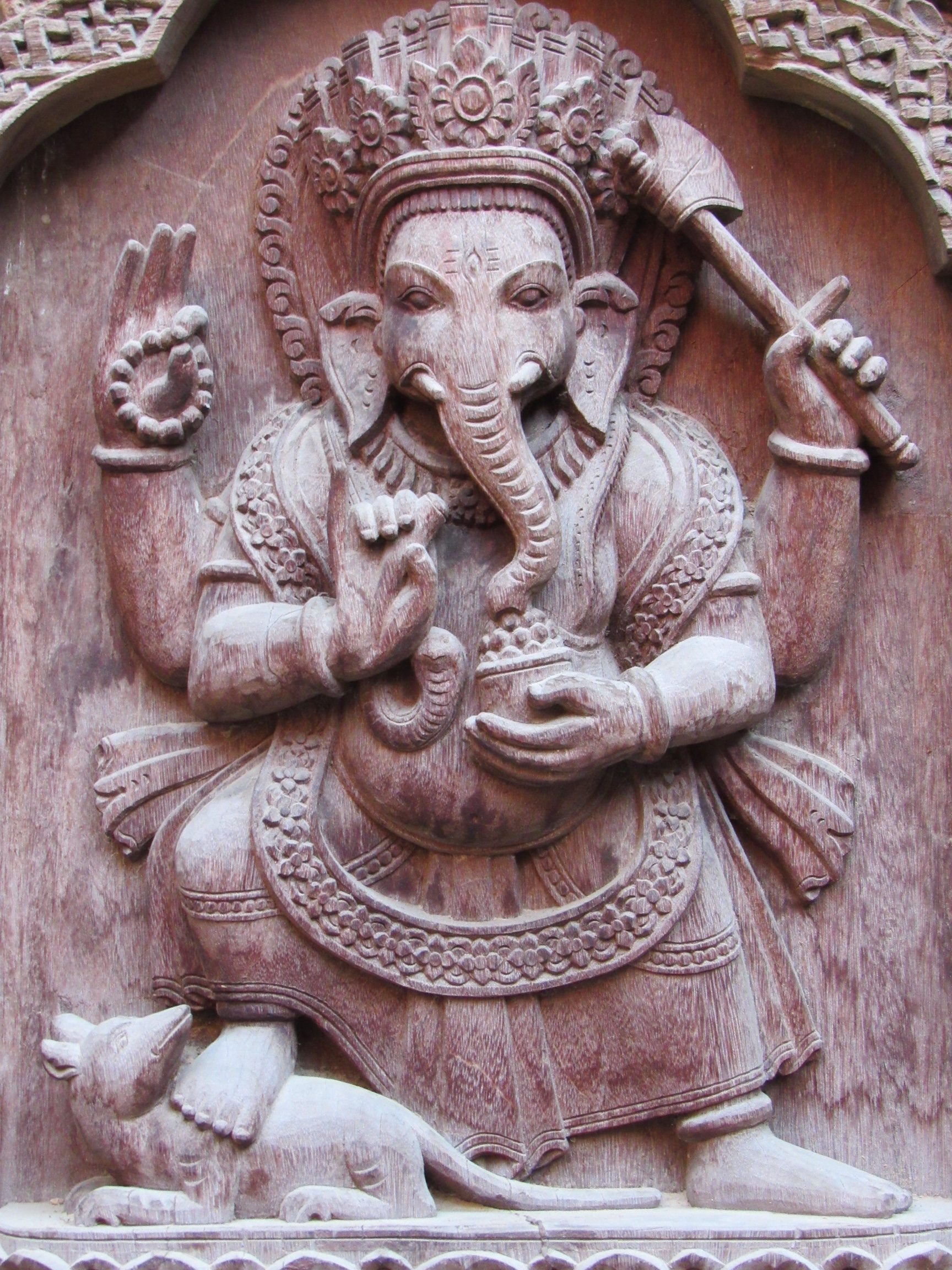
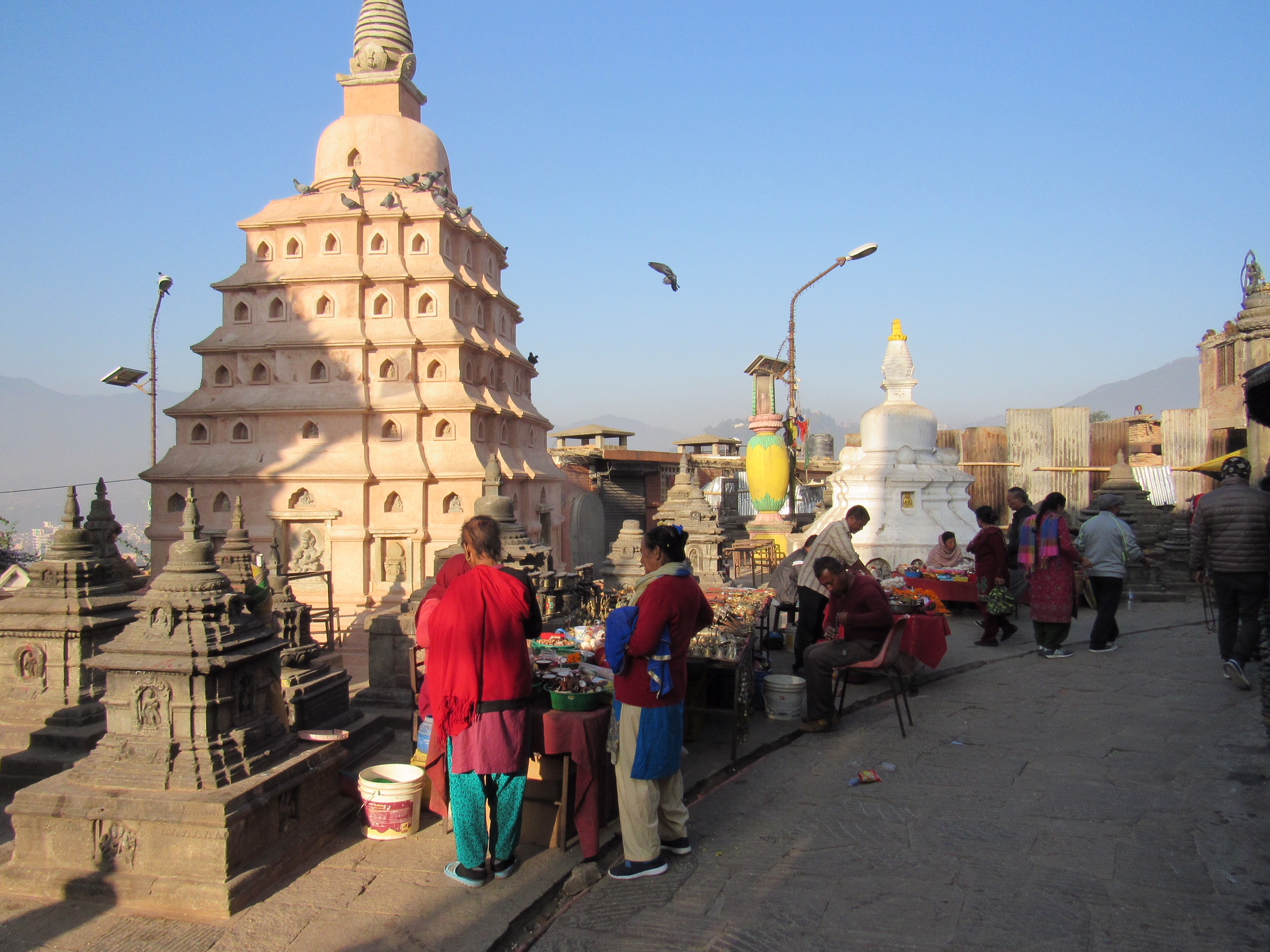
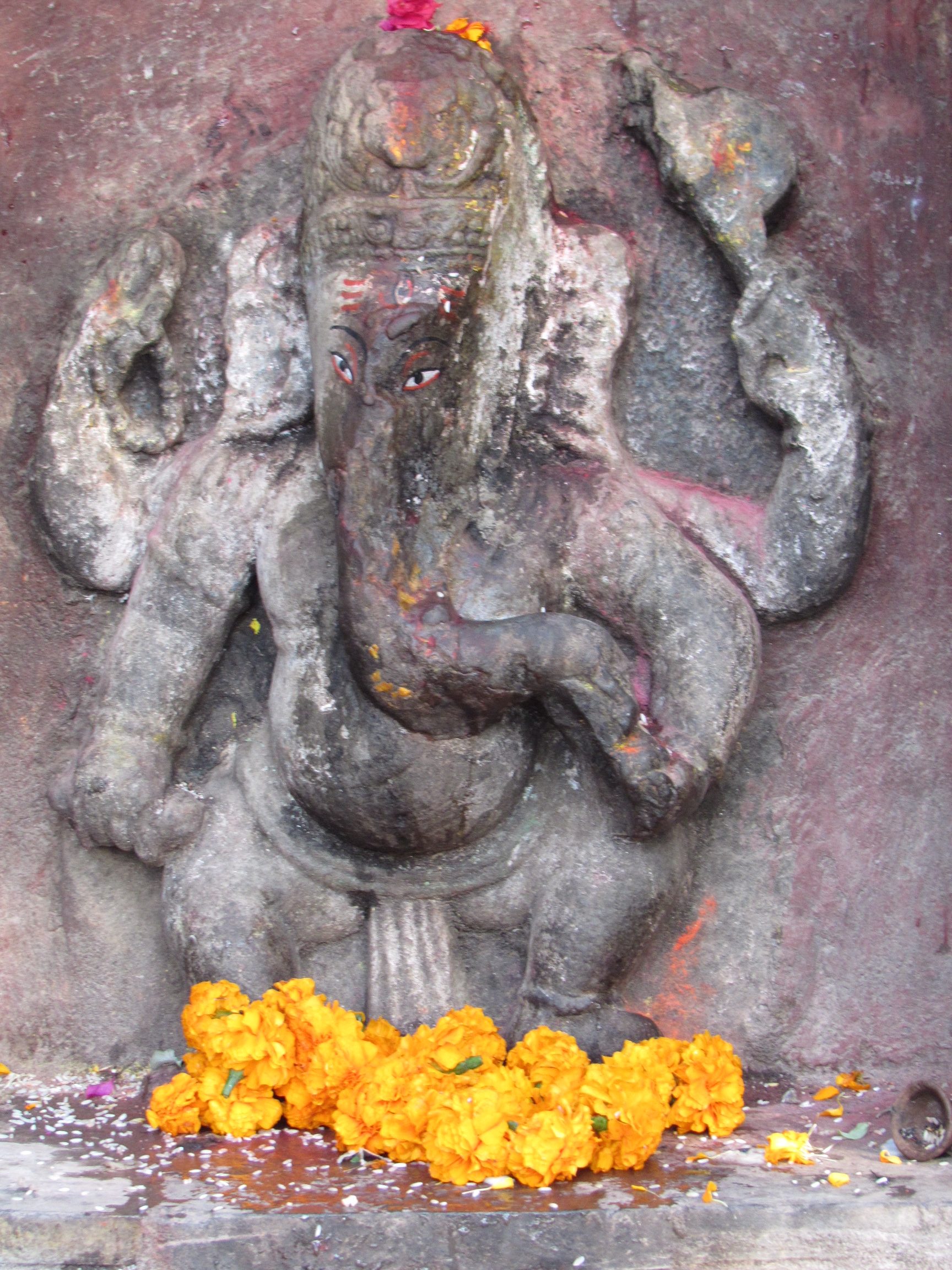
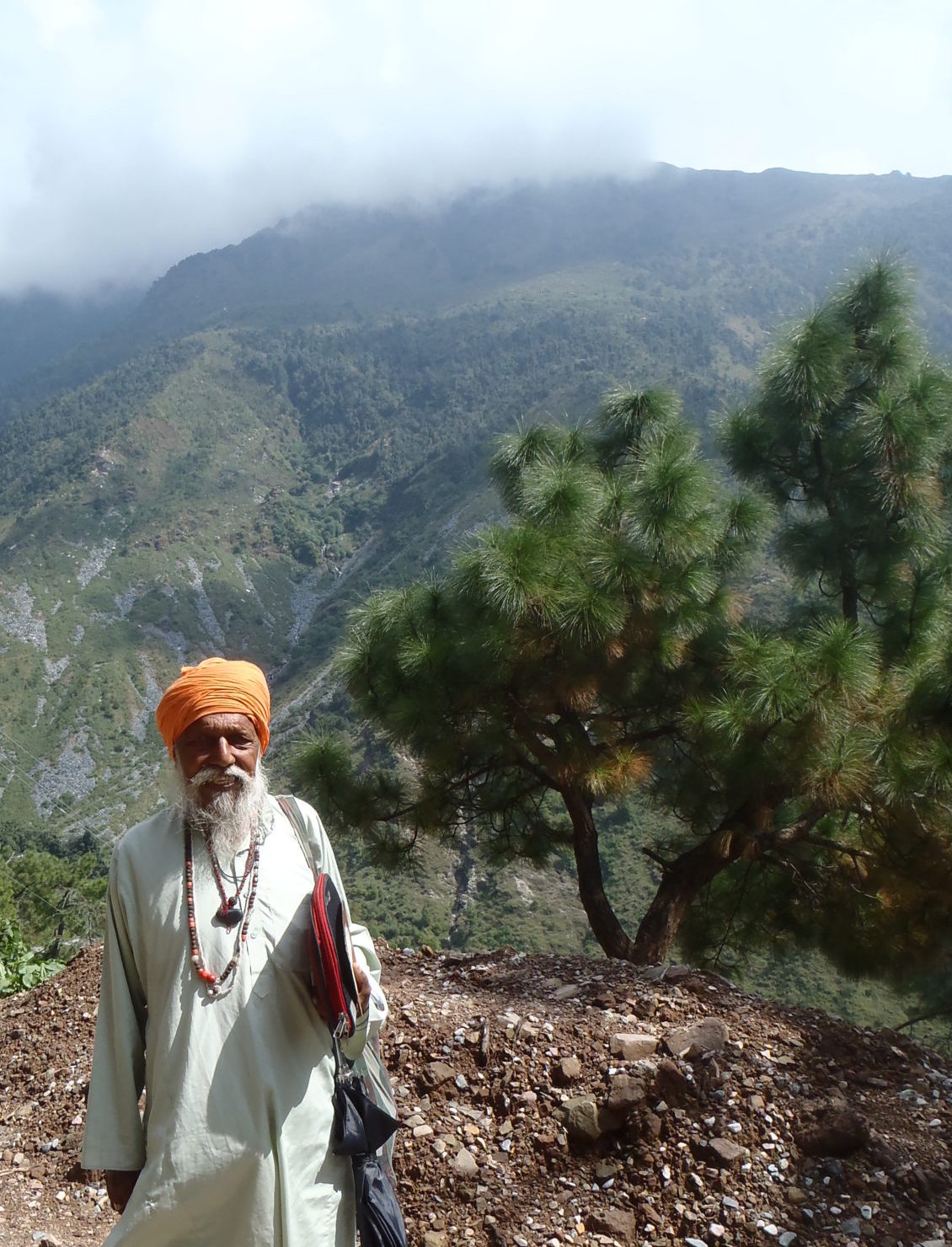
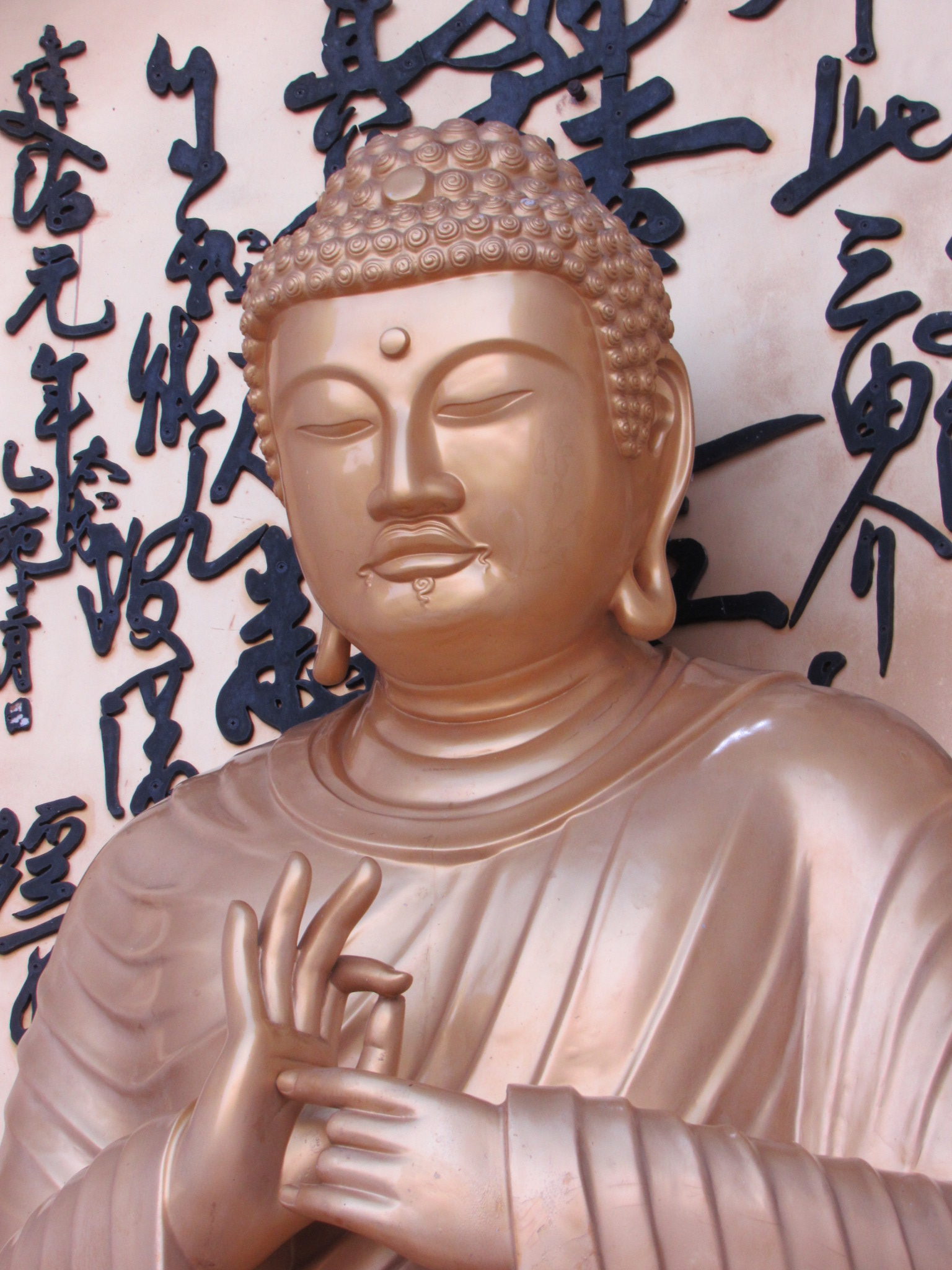
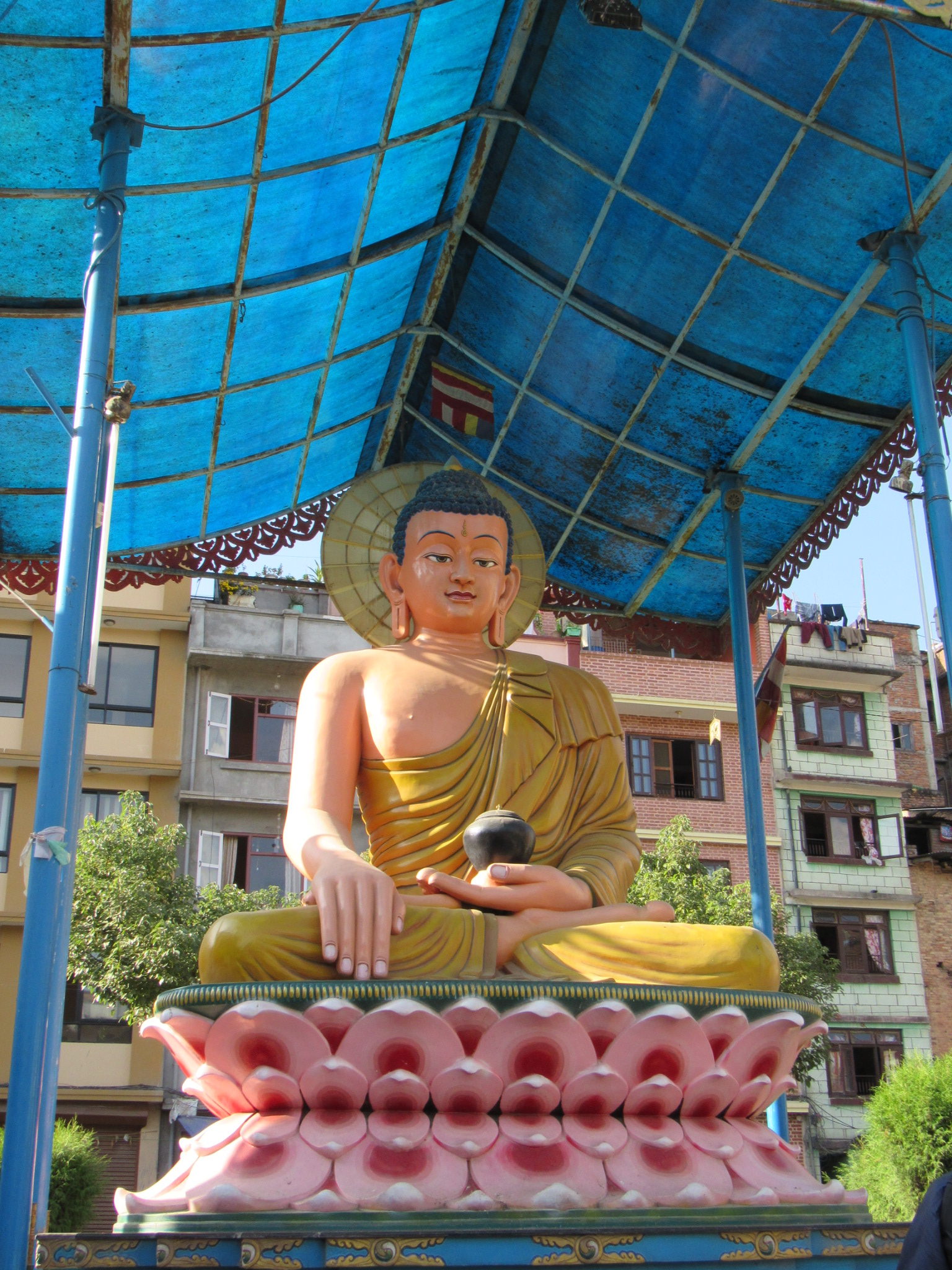
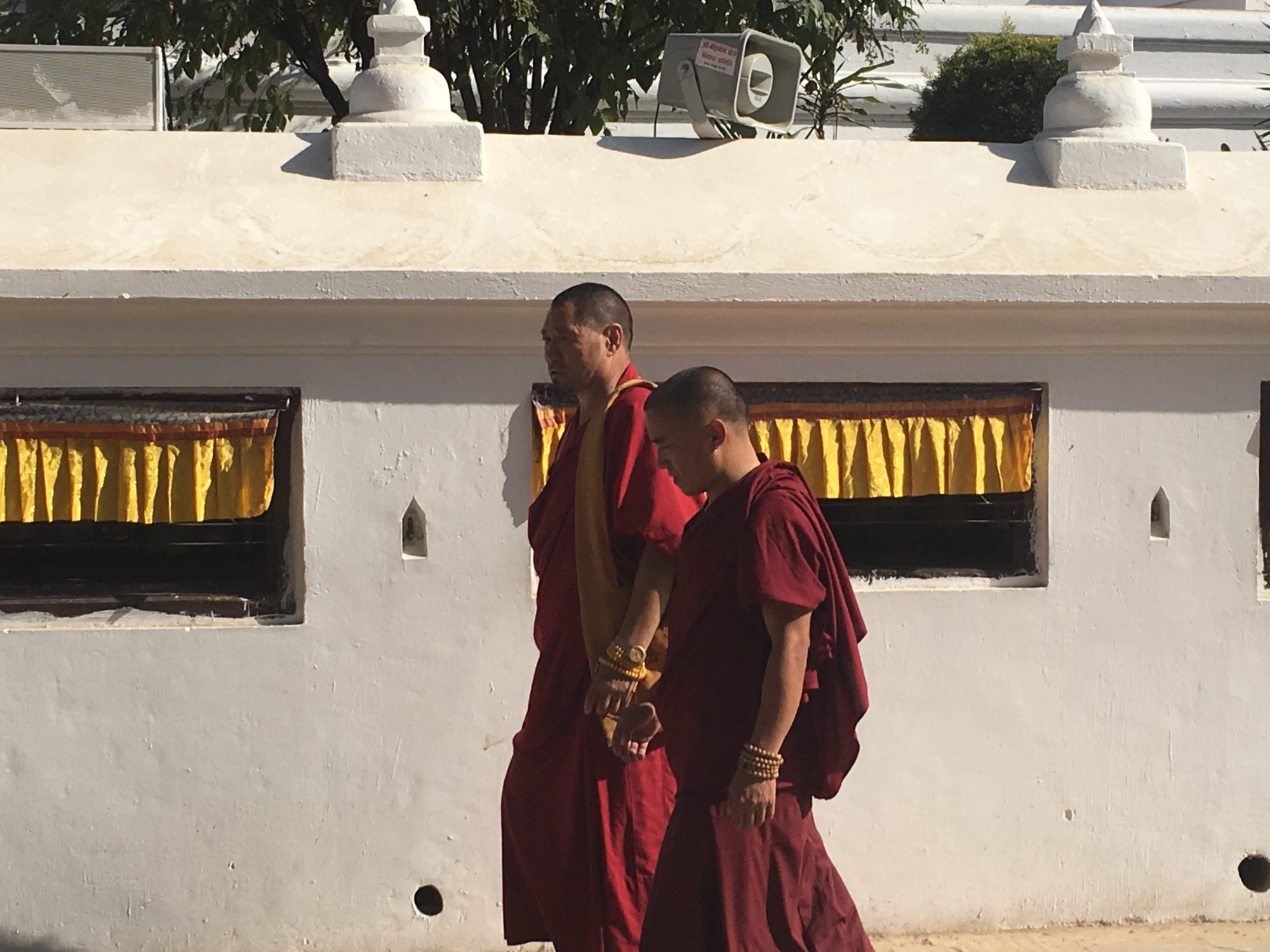
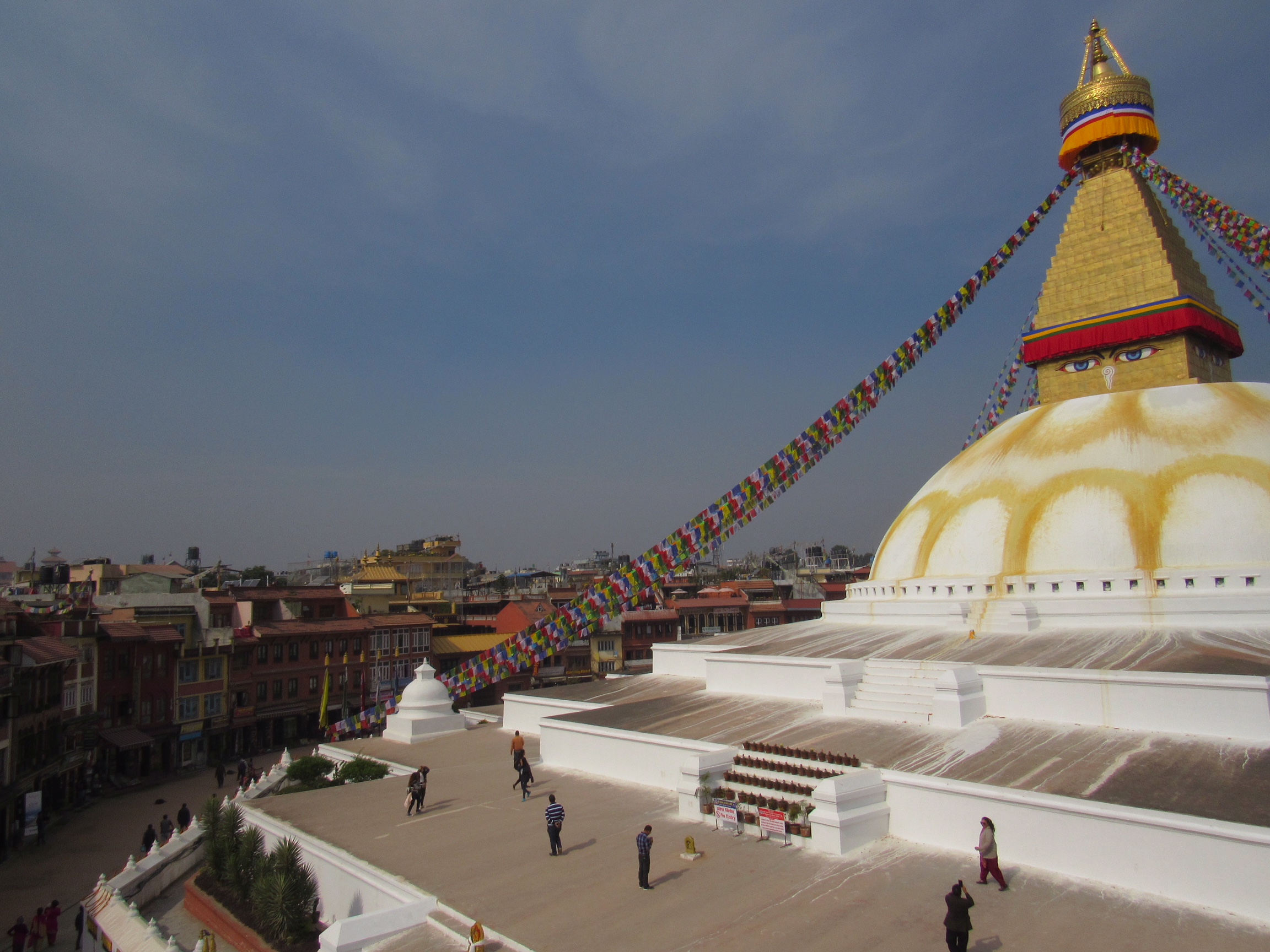
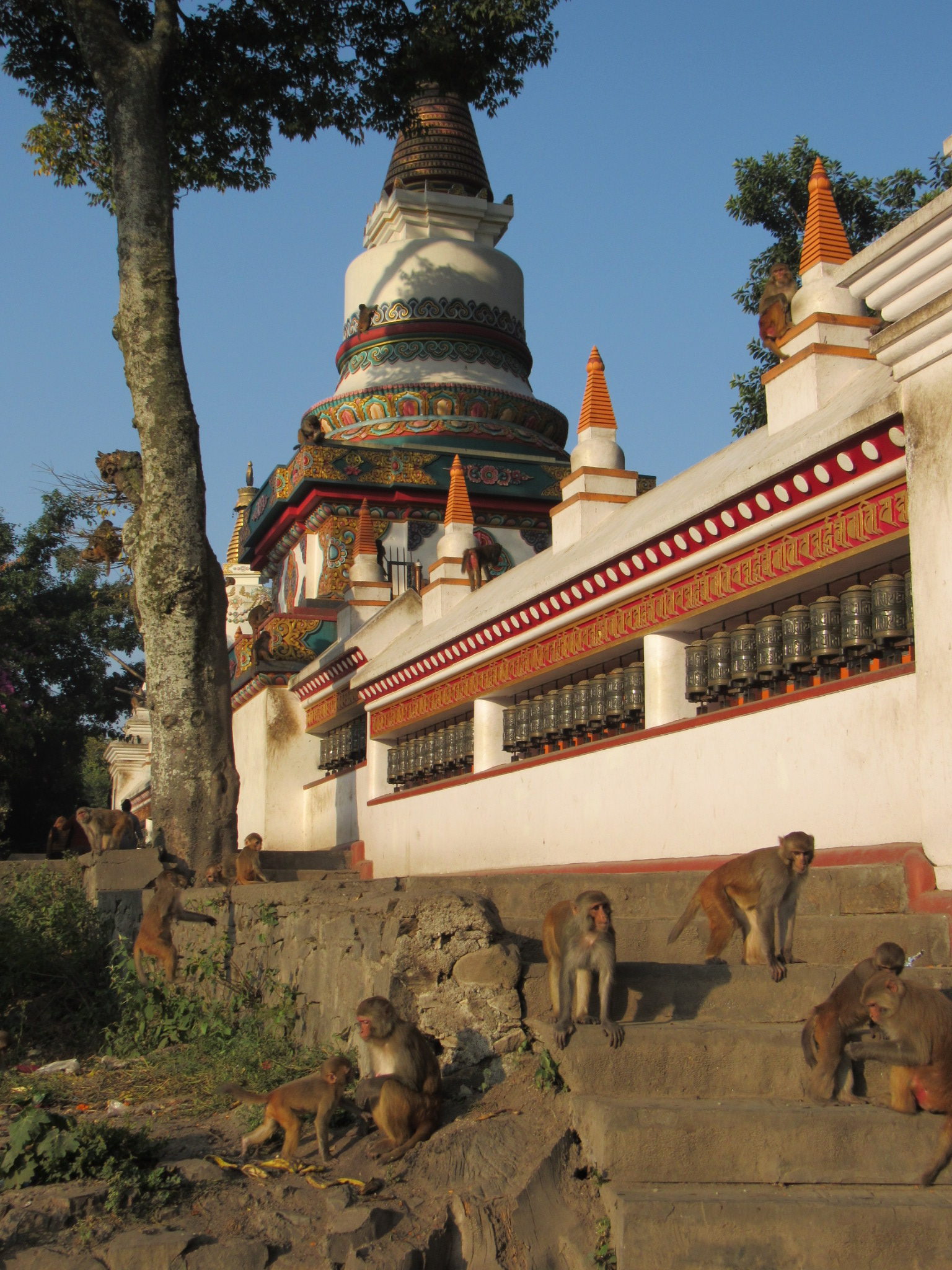


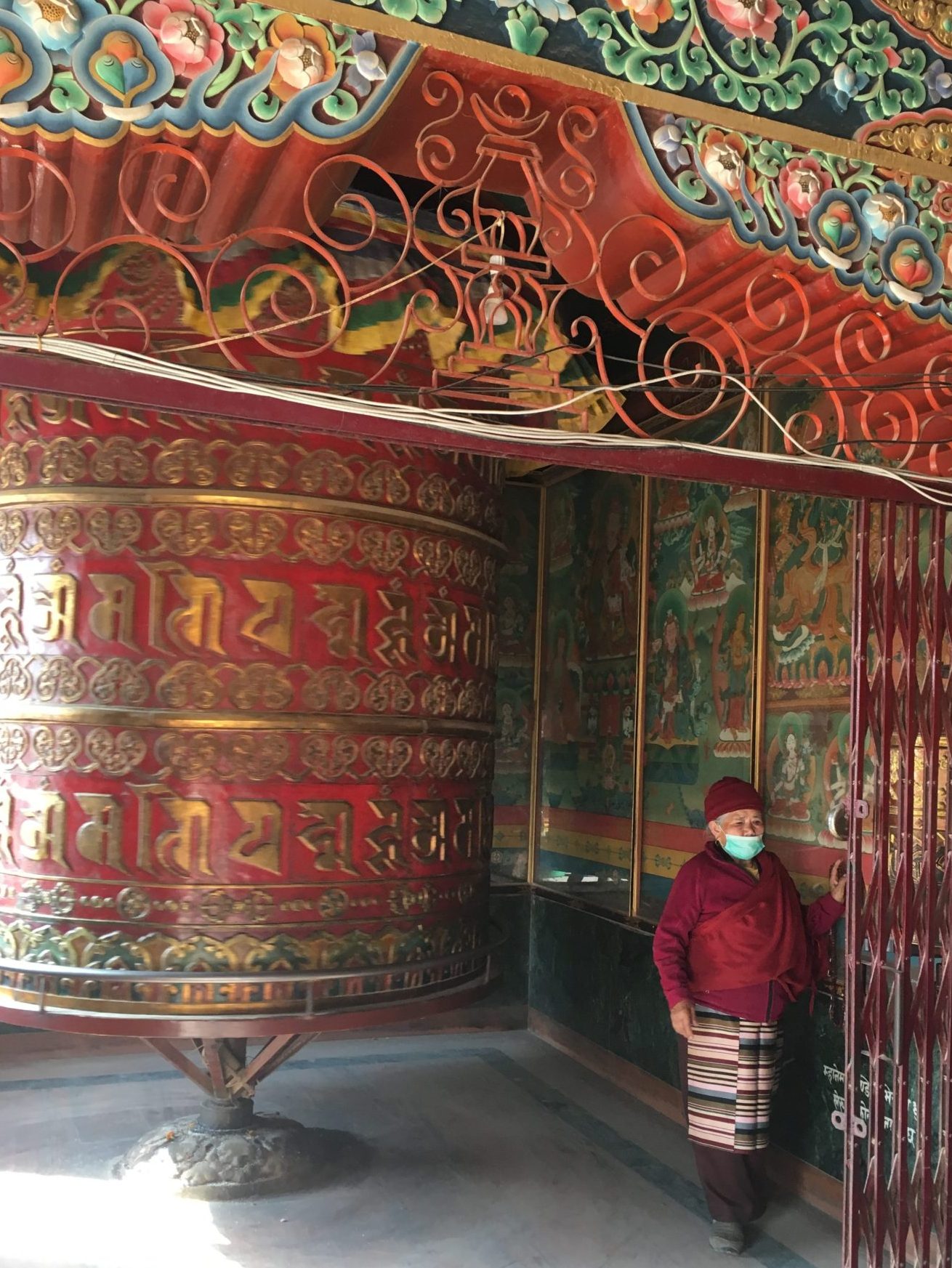
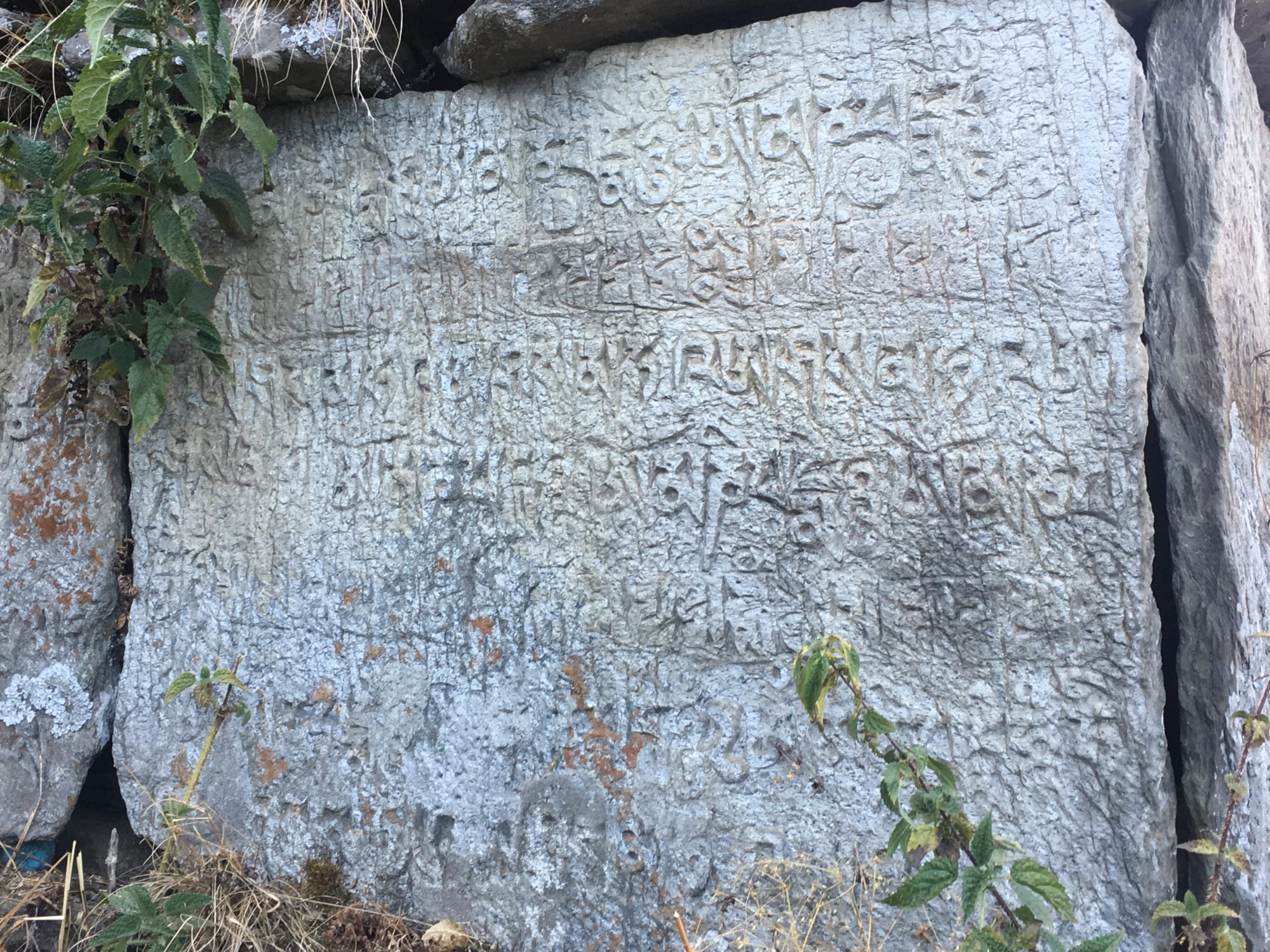
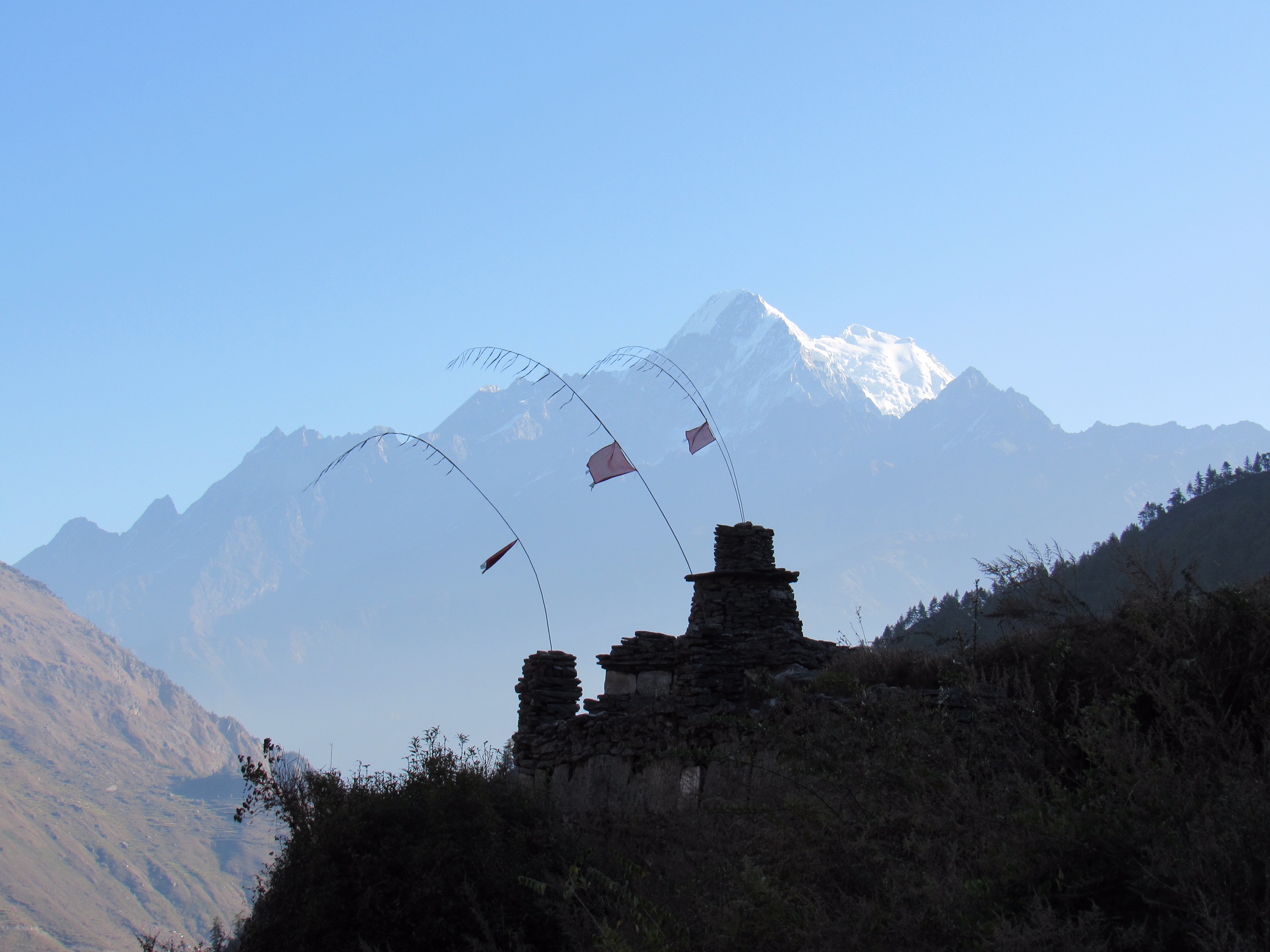
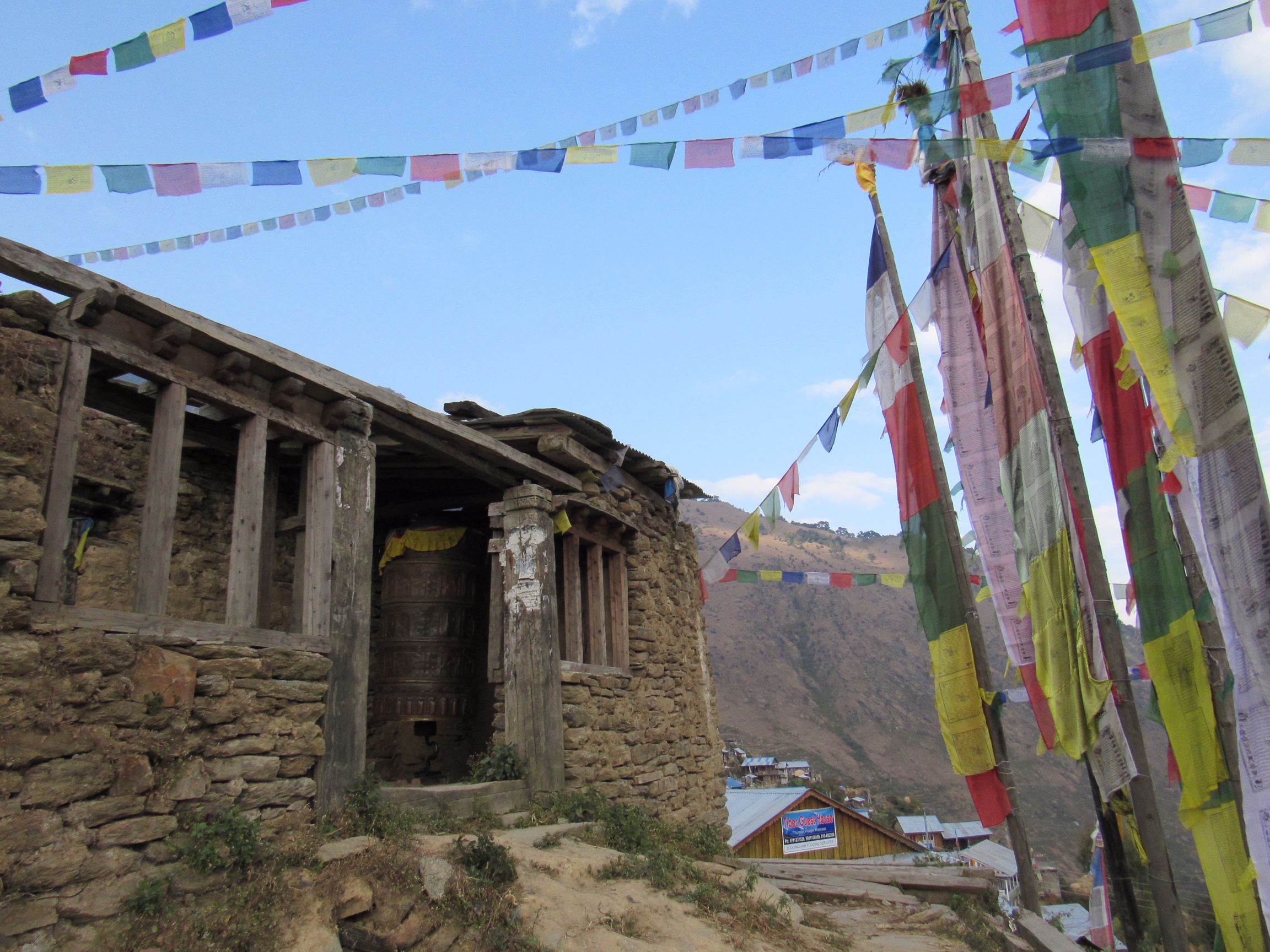
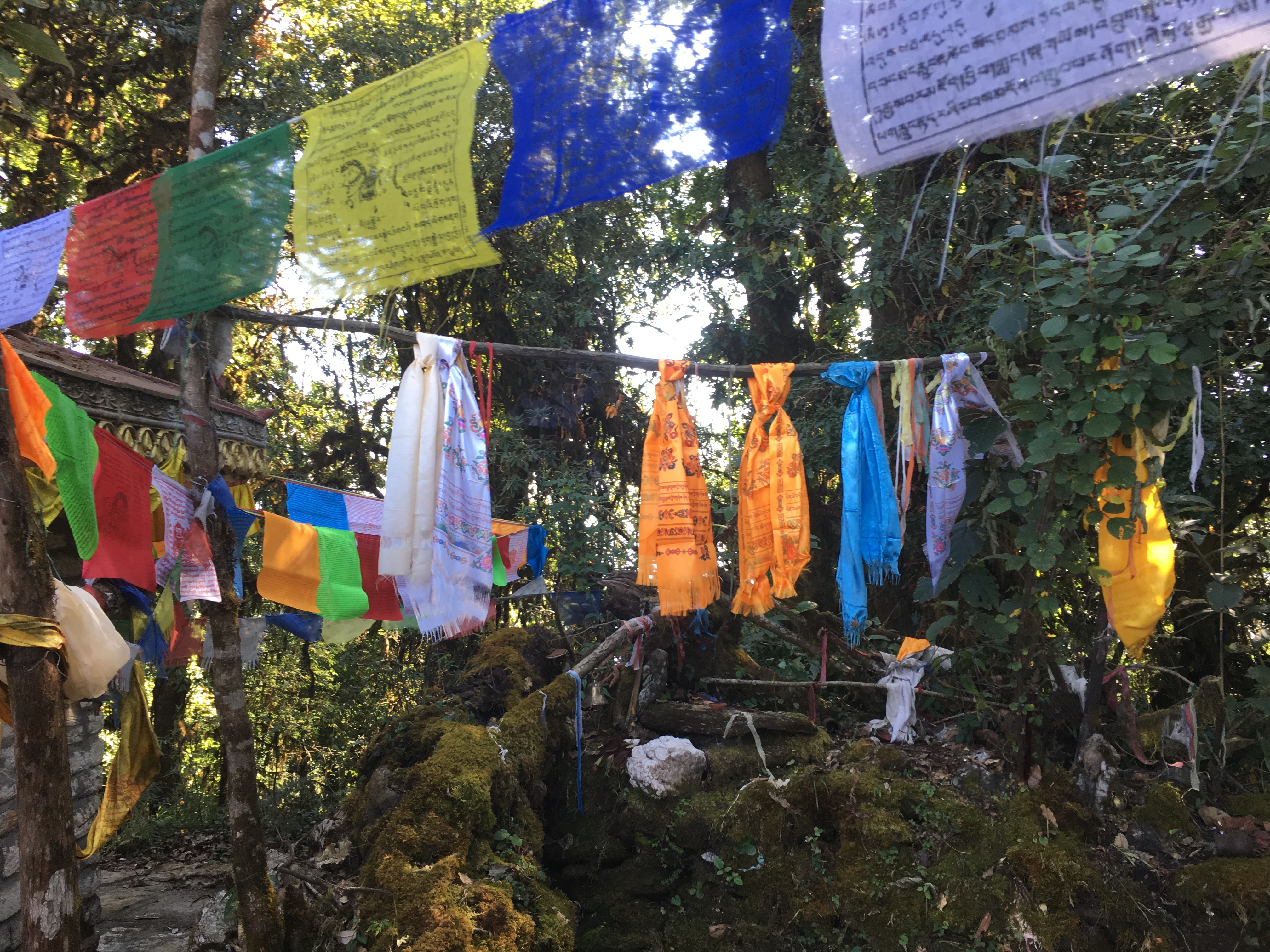
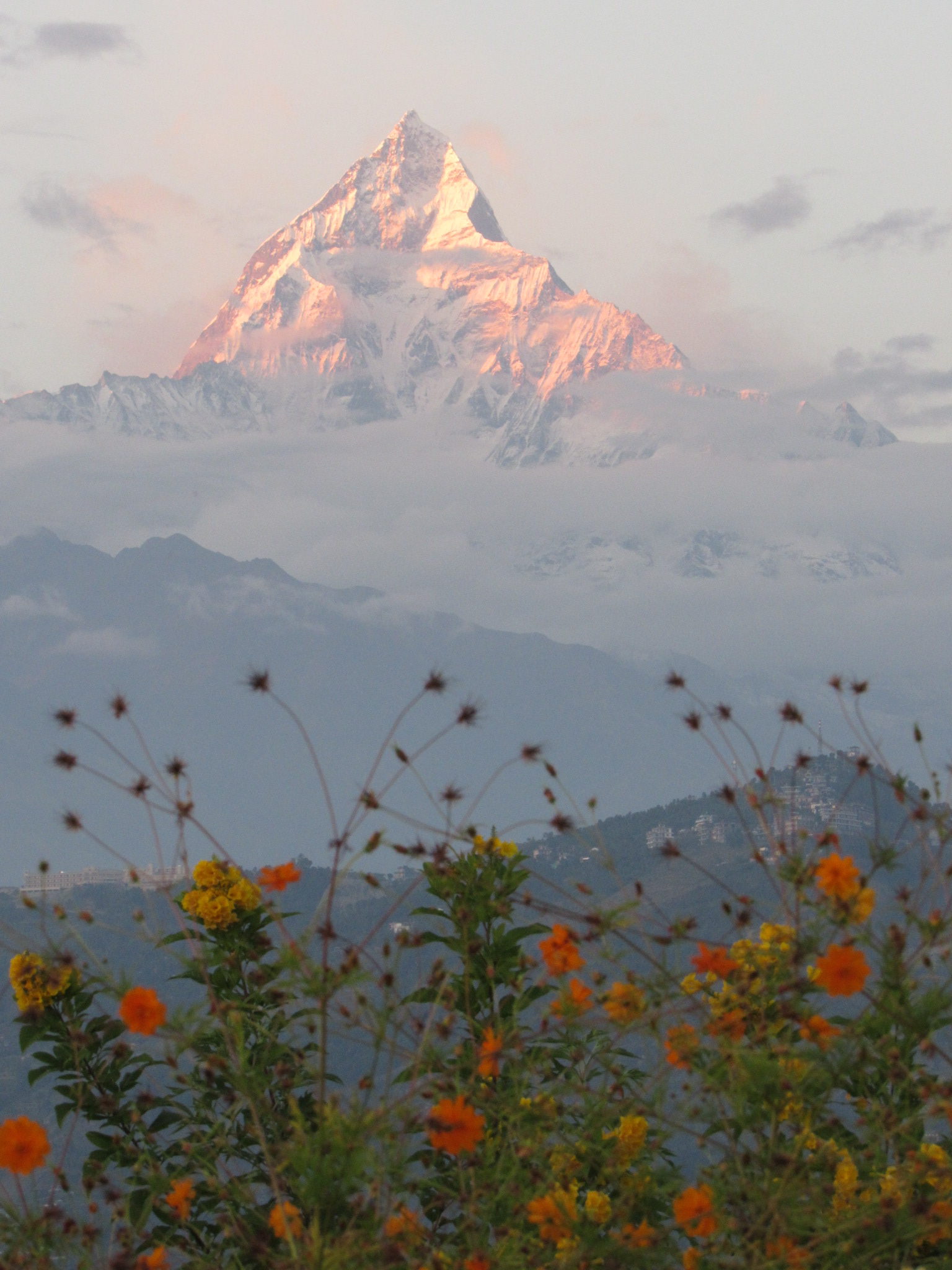
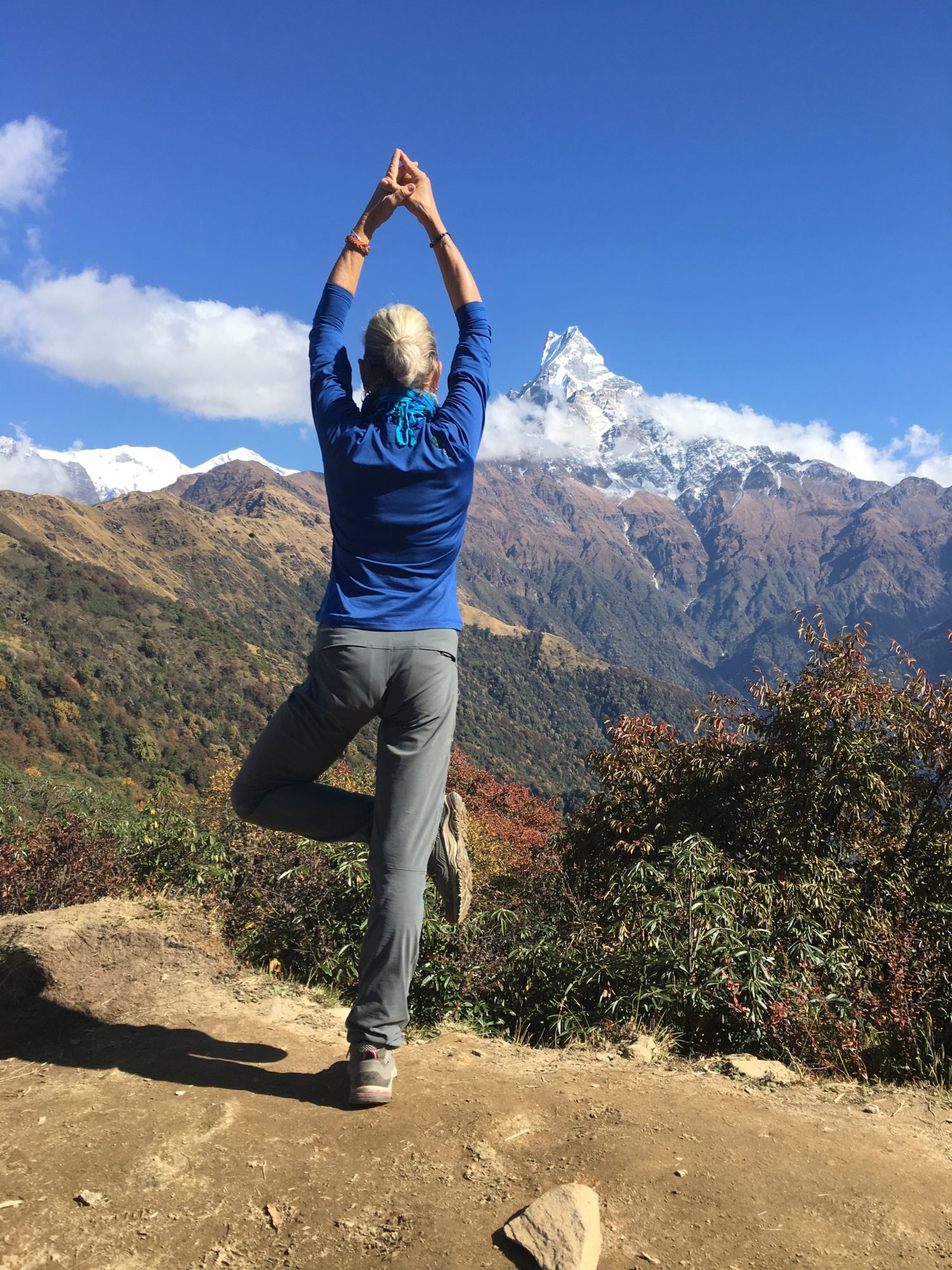
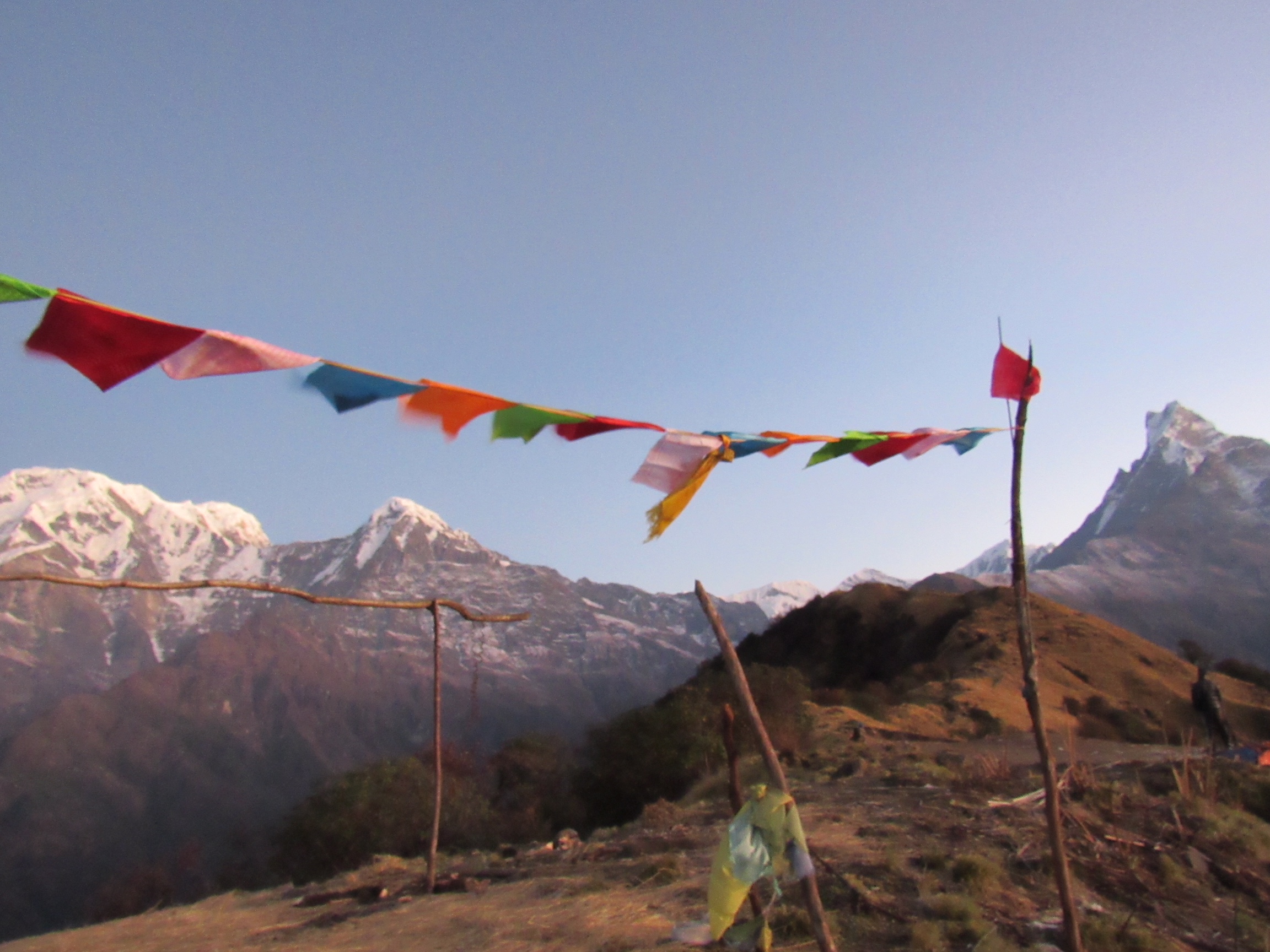
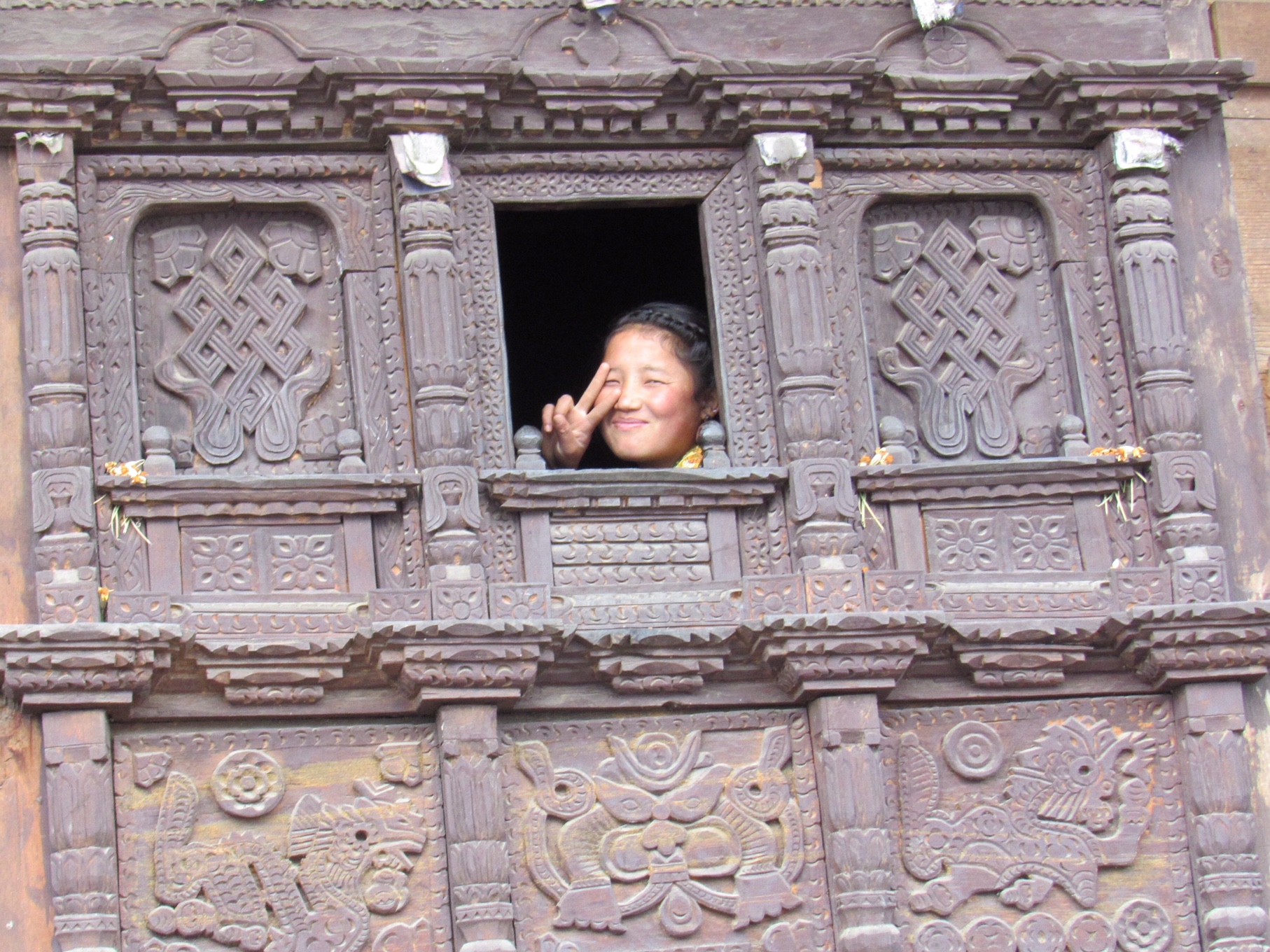
You saved the best for last. Stupendous. Thanks for sharing your journey.